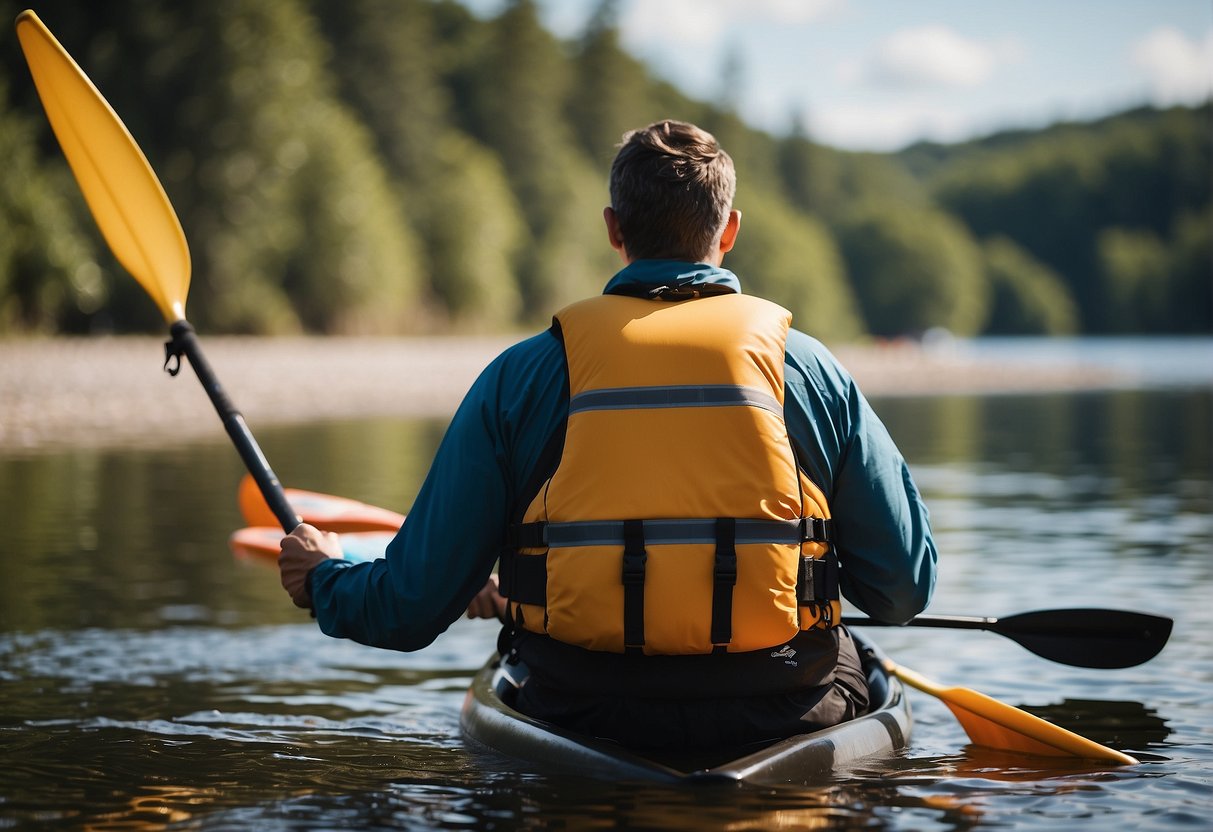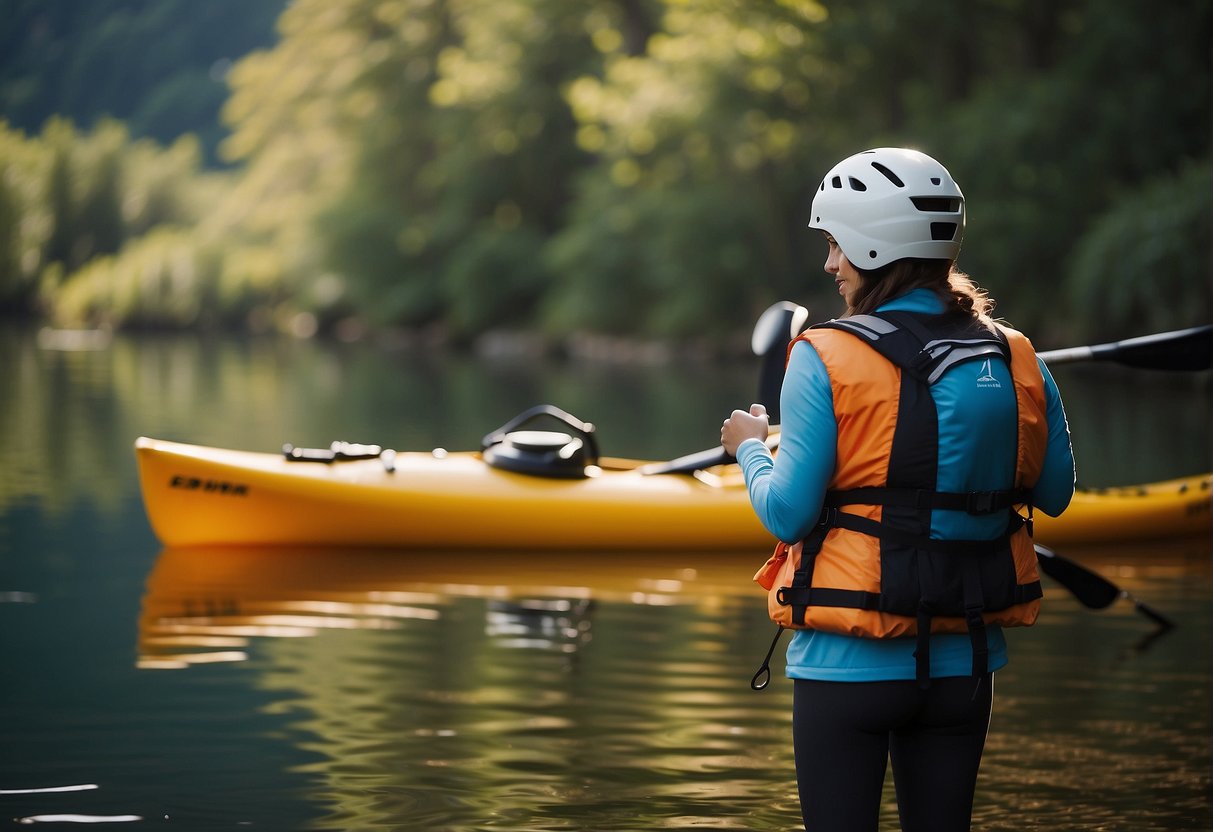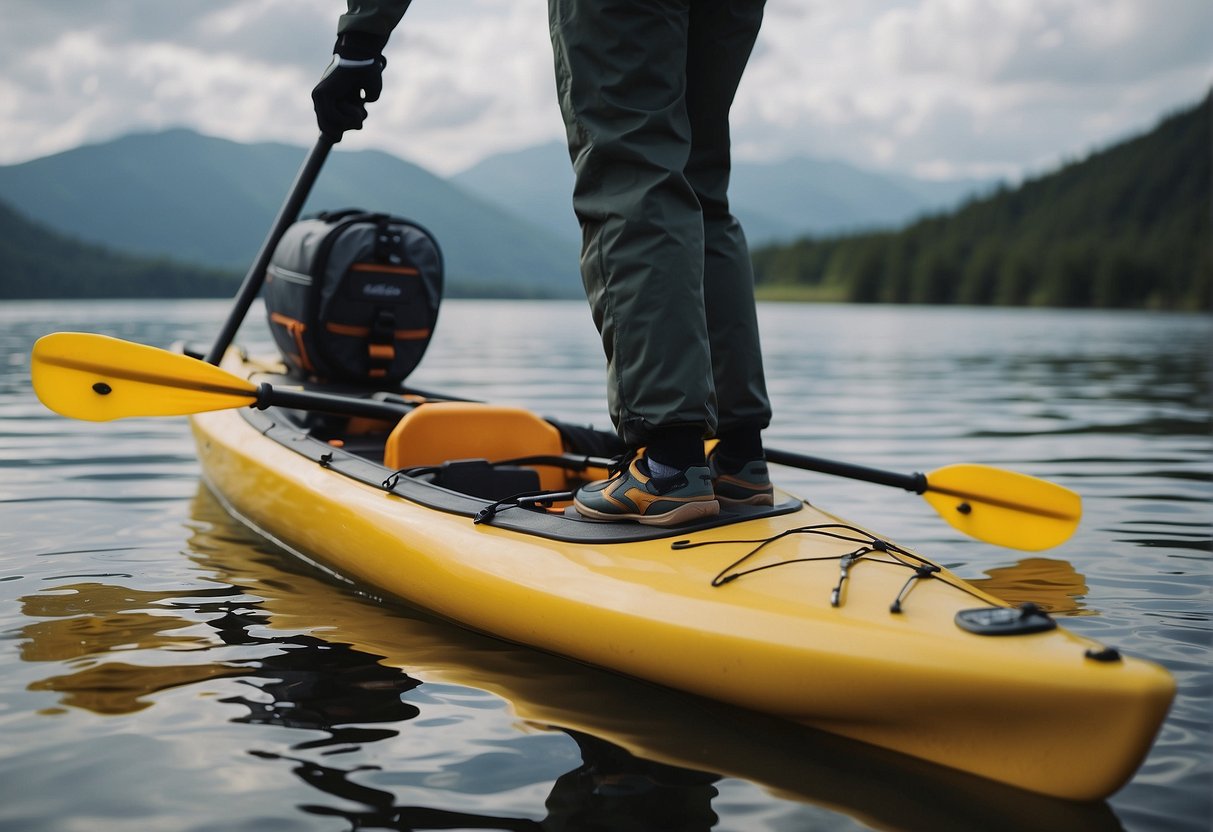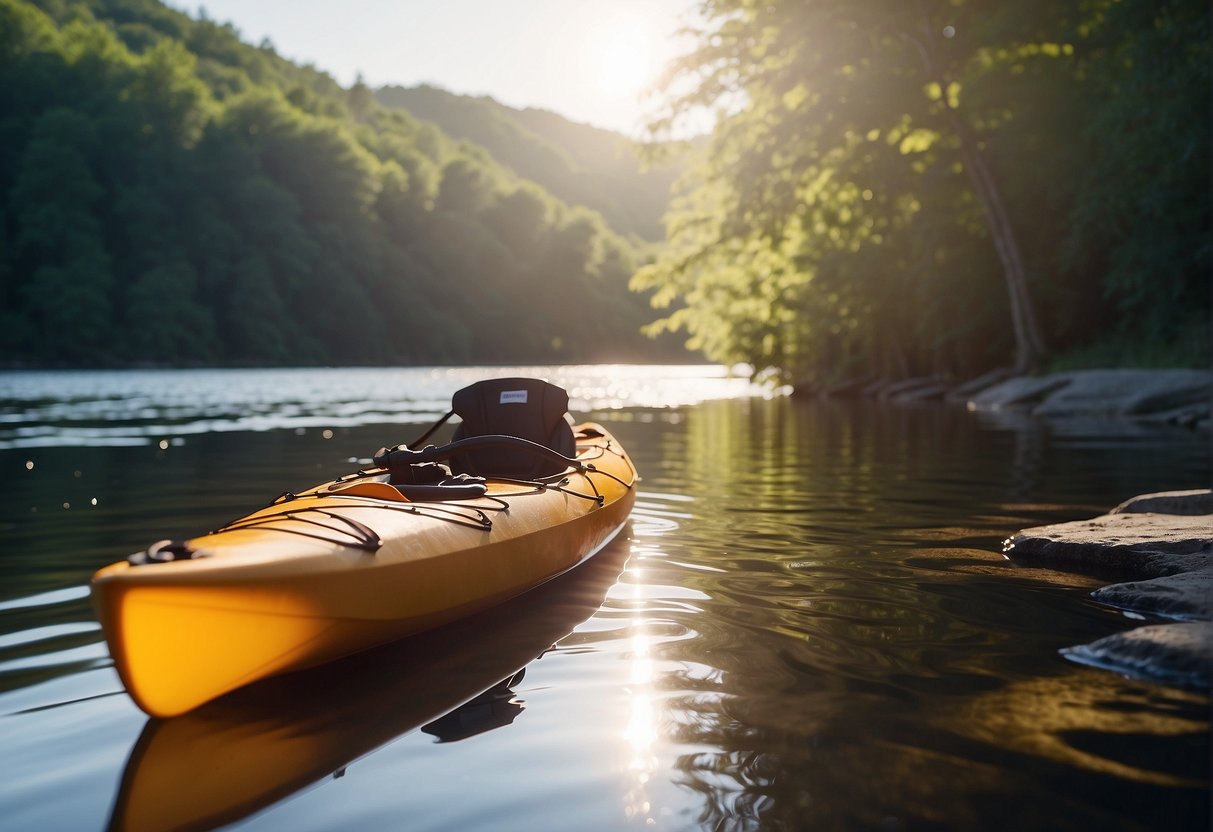When it comes to kayaking, what you wear is just as important as the gear you use. Kayaking can be an exhilarating and fun experience, but it can also be dangerous if you’re not properly prepared. Knowing what to wear for kayaking is essential to ensure that you stay comfortable, safe, and dry throughout your adventure.

First and foremost, your clothing should be appropriate for the weather and water conditions. If you’re kayaking in cold water, wearing a dry suit or wetsuit is a must to prevent hypothermia. On the other hand, if you’re kayaking in warm weather, lightweight and breathable clothing is ideal to keep you cool and comfortable. Additionally, it’s important to consider the sun’s rays, so wearing a hat and sunscreen is highly recommended.
In addition to weather and water conditions, the type of kayaking you’ll be doing should also be taken into consideration. For example, if you’re planning on kayaking in whitewater rapids, you’ll want to wear a helmet and protective gear to prevent injuries. If you’re kayaking for fishing, you’ll want to wear clothing that is comfortable and allows for easy movement, such as moisture-wicking shirts and quick-drying shorts. Overall, what you wear for kayaking should be comfortable, protective, and appropriate for the activity and conditions you’ll be facing.
Understanding Kayaking Basics

Before you head out on your kayaking trip, it’s important to understand the basics of kayaking. This will help you choose the right gear, assess water conditions, and stay safe on the water.
Types of Kayaking
There are different types of kayaking, including ocean kayaking, whitewater kayaking, and sea kayaking. Each type of kayaking requires different gear and skills. For example, ocean kayaking requires a kayak that is designed for open water and can handle waves and currents. Whitewater kayaking requires a kayak that is designed for rapids and can handle rough water. Sea kayaking requires a kayak that is designed for long-distance paddling and can handle a variety of water conditions.
Assessing Water Conditions
Before you head out on your kayaking trip, it’s important to assess the water conditions. This will help you choose the right gear and stay safe on the water. Some things to consider when assessing water conditions include:
- Water temperature: If the water is cold, you will need to wear a wetsuit or drysuit to stay warm.
- Water depth: If the water is shallow, you will need to be careful not to hit rocks or other obstacles.
- Currents: If there are strong currents, you will need to be prepared to paddle harder and be aware of potential hazards.
- Waves: If there are waves, you will need to be prepared to handle them and stay balanced in your kayak.
By understanding the basics of kayaking and assessing water conditions, you can choose the right gear and stay safe on your kayaking trip.
Essential Kayaking Apparel
When it comes to kayaking, wearing the right apparel is essential for both comfort and safety. In this section, we’ll discuss the three most important pieces of kayaking apparel: wetsuits, personal flotation devices (PFDs), and layering for temperature control.
Choosing the Right Wetsuit
A wetsuit is a must-have for kayaking, especially if you plan on paddling in colder water. Wetsuits are made from neoprene, a synthetic rubber that provides insulation and protects your skin from the cold water. When choosing a wetsuit, it’s important to consider the water temperature and your level of activity. A thicker wetsuit is needed for colder water, while a thinner wetsuit is suitable for warmer water. Also, consider the type of kayaking you will be doing. A full wetsuit is best for whitewater kayaking, while a shorty wetsuit is suitable for recreational kayaking.
Importance of a PFD
A PFD, or personal flotation device, is a crucial piece of safety equipment for kayaking. A PFD will keep you afloat in case of an accident and can save your life. When choosing a PFD, make sure it fits snugly and comfortably. A PFD that is too loose can slip off in the water, while a PFD that is too tight can restrict your movement and breathing. There are different types of PFDs available, so choose one that is suitable for your kayaking activity.
Layering for Temperature Control
Layering is important for temperature control when kayaking. It allows you to adjust your clothing as the weather and water temperature change. Start with a moisture-wicking base layer to keep your skin dry. Add an insulating layer, such as a fleece jacket, to keep you warm. Finally, add an outer layer, such as a windbreaker or waterproof jacket, to protect you from the elements. Make sure to choose clothing that is comfortable and allows for a full range of motion.
In summary, wearing the right kayaking apparel is essential for both comfort and safety. A wetsuit, PFD, and layered clothing are the three most important pieces of kayaking apparel. When choosing kayaking apparel, consider the water temperature, your level of activity, and the type of kayaking you will be doing.
Selecting Proper Footwear and Handwear

When it comes to kayaking, selecting the right footwear and hand protection is essential. Proper gear will protect you from the elements, keep you comfortable, and improve your grip on your paddle. In this section, we will discuss the different types of footwear and hand protection options available for kayaking.
Footwear for Different Conditions
The type of footwear you choose for kayaking will depend on the conditions you will be paddling in. In warmer weather, water shoes or sandals are a good option. Water shoes are comfortable and provide protection from sharp objects in the water. Sandals are also a great choice, but make sure they have a good grip on the sole to prevent slipping.
In colder weather, neoprene paddling booties are a better option. They are made from neoprene material that provides insulation and warmth. They are also comfortable to wear in the kayak, but make sure they fit well to prevent blisters.
Hand Protection Options
Protecting your hands is important when kayaking. Gloves and pogies are the two main options available. Gloves are a good choice for colder weather, as they provide warmth and insulation. They also offer protection from blisters and improve your grip on the paddle.
Pogies are a hand protection option that allows direct contact with the paddle. They are made from neoprene material and fit over the paddle shaft. Pogies keep your hands dry and warm, but they take some getting used to. They also allow you to have a better grip on the paddle.
When selecting hand protection, consider the temperature and conditions you will be paddling in. Make sure the gloves or pogies fit well and are comfortable to wear for extended periods.
In summary, selecting proper footwear and hand protection is essential for a comfortable and safe kayaking experience. Choose footwear and hand protection based on the conditions you will be paddling in. Make sure they fit well and are comfortable to wear for extended periods.
Clothing Choices for Upper and Lower Body
When it comes to kayaking, wearing the right clothing is essential to ensure comfort and safety on the water. In this section, we will discuss the clothing choices for the upper and lower body.
Upper Body Garments
For the upper body, it is important to choose clothing that provides protection from the sun, wind, and water. A moisture-wicking base layer is a good starting point to move sweat away from your body and provide insulation. Polyester and wool are good choices, and lightweight synthetic blends work well too. For extra insulation, opt for a warm top that won’t cause overheating while paddling.
A paddling jacket is a must-have for kayaking, as it keeps your upper body dry and comfortable. Look for a jacket that is waterproof and breathable, with adjustable cuffs and a hood to protect your head from the elements. A rain jacket can also be used as an alternative to a paddling jacket.
Lower Body Attire
For the lower body, it is important to choose clothing that provides protection from the water and wind. Quick-dry pants or board shorts are a good choice, as they dry quickly and provide comfort while paddling. A swimsuit can also be worn if you prefer.
Wearing a wetsuit or drysuit is recommended if the water temperature is below 60°F. However, if the water temperature is above 60°F, wearing a wetsuit or drysuit may not be necessary. According to Paddling Space, you can add together the water and air temperatures (in Fahrenheit), and if the total is above 120, it’s safe to paddle without the need for any additional protection.
In addition to the above, wearing sun protection is also important. Look for clothing that has UPF protection, or wear a hat and apply sunscreen to exposed skin.
Overall, choosing the right clothing for kayaking is important to ensure comfort and safety on the water. By following the above guidelines, you can make the most of your kayaking experience.
Accessories and Additional Gear

When it comes to kayaking, you need to make sure you have the right gear to keep you comfortable and safe. In addition to the basic clothing items we discussed earlier, there are a few accessories and additional gear that you may want to consider bringing along on your kayaking trip.
Headwear and Eyewear
You should always wear a hat or cap to protect your head from the sun and keep your hair out of your face. A beanie can also be a good option if the weather is cooler. Sunglasses are also essential to protect your eyes from the sun’s glare. Make sure they have polarized lenses to reduce glare off the water.
Additional Layers and Accessories
Depending on the weather and water temperature, you may want to bring along additional layers. A mid-layer, such as a fleece layer, can provide extra warmth on cooler days. Paddling gloves can also be useful to protect your hands from blisters and the cold water.
If you’re kayaking in cold water, waterproof socks can help keep your feet warm and dry. And don’t forget to apply sunscreen to any exposed skin to protect yourself from the sun’s harmful rays.
Finally, a personal flotation device (PFD) is essential for any kayaking trip. Make sure it fits properly and is comfortable to wear for extended periods of time.
By bringing along these accessories and additional gear, you can ensure that you are comfortable and protected during your kayaking adventure.